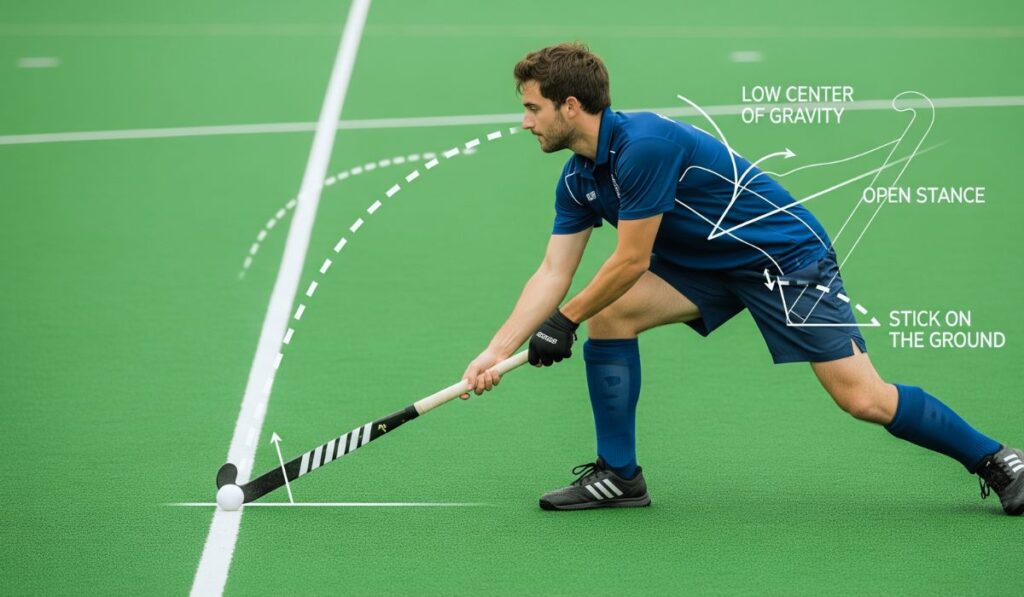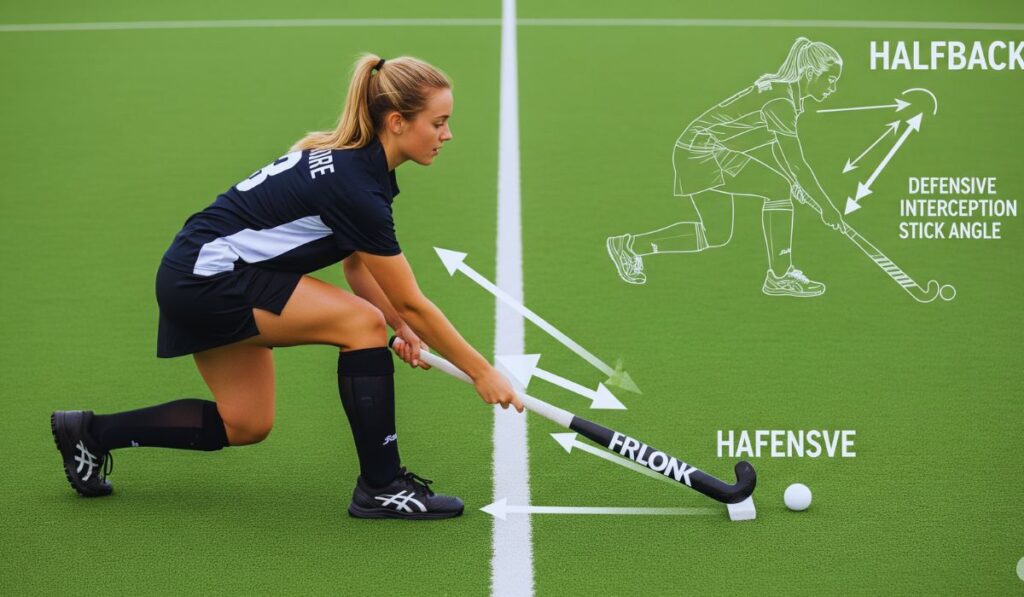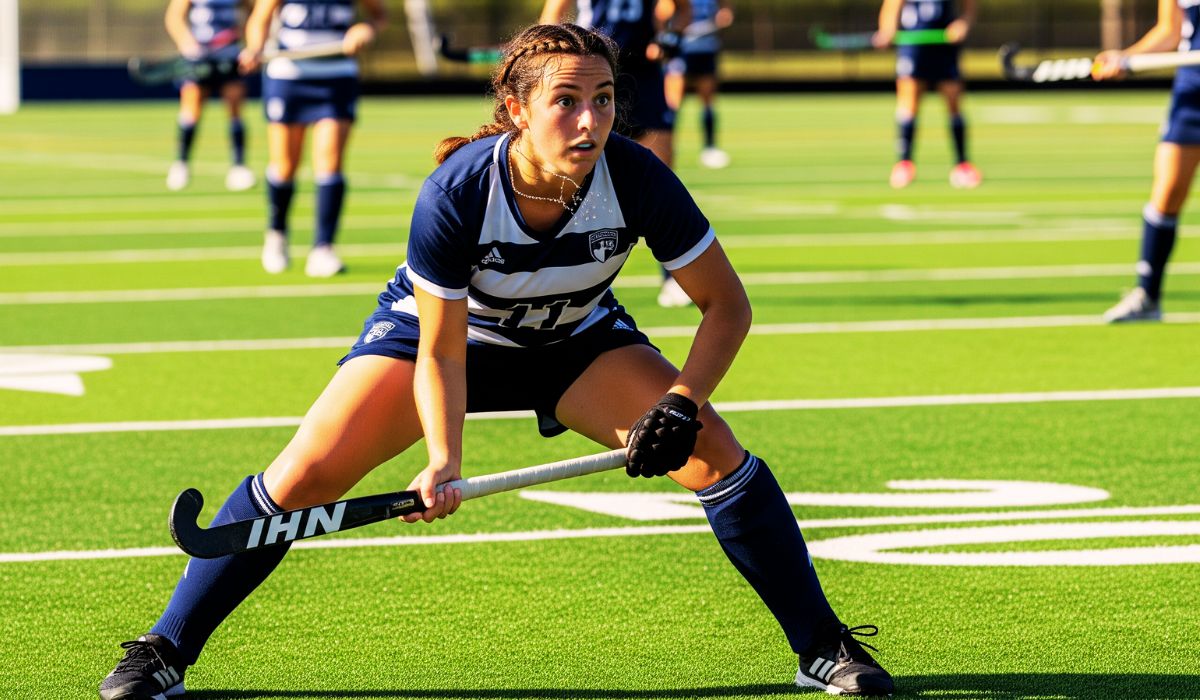When we talk about hockey, our minds often leap to dazzling forwards who score breathtaking goals or the fearless goalkeeper who becomes the final line of defense. But hidden in plain sight, occupying a role that demands equal parts courage, vision, and stamina, is the halfback in hockey—a position that doesn’t always get the glory but often decides the destiny of a match.
The halfback in hockey is more than just a bridge between defense and attack. It is the beating heart of the game, the silent strategist, the player who reads the field like an open book and anticipates the opponent’s every move. Without a strong halfback, a team can lose its rhythm, its structure, and even its confidence. Yet, with a skilled and determined halfback, a team finds its soul, its balance, and its pathway to victory.
In this article, we will dive deep into the emotional, tactical, and sensory layers of the halfback position in hockey. By the end, you’ll see why this role is not just important—it’s transformative.
The Emotional Pulse of the Halfback in Hockey
Imagine being on the pitch, the crowd roaring in the background, the smell of fresh turf mixing with the adrenaline in the air. The halfback in hockey stands right in the middle of it all, with responsibility pressing on their shoulders. They know that one wrong pass could spark disaster, but one brilliant interception could ignite a counterattack that sends fans leaping from their seats.
This emotional weight makes the halfback a rare blend of calmness and intensity. They must silence their nerves while maintaining a fiery determination to control the flow of the game. The beauty of this position is not just in the physical play but in the mental strength it demands.
The Halfback as the Bridge Between Attack and Defense
One of the most seductive qualities of the halfback in hockey is how they seamlessly connect the two ends of the pitch. A strong defensive tackle, followed by a swift forward pass, can transform the game in seconds. The halfback is the bridge—the thread weaving the defense and the attack into one cohesive unit.
When executed well, this role feels like poetry in motion. The ball travels from the defender to the halfback, and with a flick of vision and precision, it finds the forward who surges toward the goal. The crowd doesn’t always applaud the halfback, but without them, the magic doesn’t happen.

The Physical Demands of Playing Halfback
Being a halfback in hockey is not for the faint-hearted. The lungs burn, the legs ache, and yet the player must push through with tireless energy. The halfback is expected to cover massive ground, supporting defenders one moment and charging forward the next.
It is a position that requires the stamina of a marathon runner, the reflexes of a goalkeeper, and the vision of a playmaker. Every sprint feels like fire in the muscles, yet it is this unrelenting physical demand that shapes the halfback into the warrior-like figure every successful hockey team needs.
The Mental Artistry of a Halfback
The halfback in hockey is not just a player of strength; they are a thinker, an artist of anticipation. They must read the body language of opponents, sense the shifts in momentum, and position themselves where danger lurks.
The mental game here is as thrilling as the physical one. A great halfback is always one step ahead, almost psychic in predicting where the ball will go. This sixth sense separates the average from the extraordinary.
The Pressure and the Pain
There is an undeniable darkness to this position too. For every glorious interception, there’s the crushing weight of mistakes. If a halfback loses focus, the team can be ripped apart by counterattacks. They are often blamed when defenses crumble or when forwards starve of supply.
The pressure can feel suffocating, but this is also what makes the role heroic. To play halfback in hockey is to embrace this risk, to walk the thin line between triumph and heartbreak, and to do it again and again without losing faith.
The Beauty of Vision and Timing
If hockey is a canvas, the halfback is the painter, choosing when to brush delicately and when to strike boldly. The vision of a halfback—the ability to see beyond the immediate chaos and pick out a teammate in space—is one of the most sensory-rich experiences in the sport.
It is like hearing a perfect note in music or seeing a dancer move effortlessly across a stage. Fans may not always notice it, but coaches and teammates know: this vision is the difference between average play and greatness.
Famous Halfbacks Who Changed Hockey
Over the years, many legends have worn the badge of halfback with pride. Their ability to dictate games, inspire teammates, and control opponents made them unforgettable. While the forwards may grab headlines, halfbacks are often the unsung architects of history.
From India’s golden era to modern international giants, the halfback role has remained the cornerstone of winning strategies. These players showed that it is not always the scorers but the providers who write the true story of hockey.
Why the Halfback Position Matters Today More Than Ever
Modern hockey is faster, sharper, and more unforgiving than ever before. Teams now rely heavily on their halfbacks to press high, recover quickly, and transition instantly. Without a strong halfback, even the most talented squads collapse under pressure.
This role is no longer just supportive—it is decisive. Whether it’s international tournaments or local leagues, the team that controls the midfield through a strong halfback often controls the entire game.
The Seductive Magic of the Halfback Role
What makes the halfback in hockey so irresistible is the way it combines everything we love about the sport—strength, speed, vision, emotion, and drama. Watching a halfback dominate a game feels like witnessing an unsung symphony, where every note is perfectly timed to change the mood of the match.
For young players dreaming of greatness, the halfback role is not just a position—it’s a calling. It demands sacrifice, courage, and intelligence, but it rewards with influence, respect, and the quiet satisfaction of knowing the game bends to your touch.
The Silent Backbone of the Game
In the thunderous world of hockey, where dazzling forwards snatch headlines and resilient goalkeepers win applause with acrobatic saves, there exists a position often overlooked, yet utterly indispensable: the halfback. The halfback in hockey is not just another player on the turf; they are the quiet commander, the bridge between attack and defense, the heartbeat of transitions, and the strategist who threads order into chaos. Without them, the game collapses into disarray. With them, even an underdog team can find rhythm, structure, and victory.
The Halfback in Hockey as the Soul of Balance
Imagine a symphony without rhythm, a dance without timing, or a battle without strategy. That is what hockey would feel like without its Halfback in Hockey. Positioned between defenders and forwards, the halfback in hockey ensures the ball flows seamlessly, breaking the opposition’s charge and igniting sparks of offense in an instant. Their role is soaked with dual responsibilities—guarding the backline while fueling the front. Unlike a striker whose glory is measured in goals, or a goalkeeper whose brilliance is defined in saves, the halfback thrives in subtleties—the unnoticed tackle, the quick interception, the precise pass that births a counterattack.
The Neglected Greatness of the Halfback in Hockey
It is easy to dismiss their importance because they rarely score or bask in the spotlight. But take a Halfback in Hockey out of the equation, and the cracks begin to show. Defenders grow exposed, forwards are starved of opportunities, and the team begins to crumble under pressure. The negative space they leave behind becomes a glaring vulnerability. A good halfback doesn’t just plug holes; they prevent them from existing in the first place. They create a sense of balance that makes every teammate shine brighter.
Halfback in Hockey: A Role Demanding Both Grit and Grace
To be a halfback in hockey is to live in contradictions. You must be rugged enough to tackle, yet graceful enough to pass with artistry. You must be aggressive enough to chase, yet patient enough to hold your line. The position demands stamina that doesn’t fade, vision that doesn’t blur, and decision-making that doesn’t falter under duress. It is a position where mistakes are mercilessly punished, and yet brilliance is often overlooked. The irony is both cruel and poetic—the better the halfback, the less you notice them, because their very excellence erases danger before it becomes visible.

Sensory Power: The Feeling of Being a Halfback in Hockey
Picture the turf beneath your feet, the sharp thud of the ball against your stick, the quick inhale of breath as the opposition charges. You can feel sweat dripping, adrenaline pulsing, and the stadium’s hum growing louder. As a halfback, you sense the movement of both allies and enemies, your ears tuned to shouts from every direction. You must read the game like a book—anticipating the next move before it is written. The sensory overload is immense, yet the halfback finds poetry in it, turning the chaos of clashing sticks and pounding footsteps into a calculated, rhythmic dance.
Why Halfbacks Often Define Matches
Many believe games are won with goals. But seasoned observers know the truth—most games are won in midfield. The halfback in hockey controls that very battlefield. They dictate the tempo, either slowing the game to calm chaos or accelerating it into a furious sprint that leaves opponents breathless. When a halfback is in form, their team feels untouchable; when they falter, the cracks become unavoidable. It is this invisible thread they weave through the game that makes them indispensable.
The Seductive Art of the Perfect Pass
Few moments in hockey feel as hypnotic as a halfback crafting the perfect through-ball. It is not just technique—it is seduction. The flick of the wrist, the smooth curve of the stick, the sudden gasp from the crowd as the ball slices between defenders—it feels like artistry. In that moment, the halfback becomes more than a player. They become a conjurer, a magician painting beauty on green turf. A single pass can ripple into a goal, a victory, or even a moment etched forever into memory.
Halfback in Hockey: The Tireless Warrior
The lungs burn, the legs ache, and the sweat blinds, yet the halfback must keep running. There is no rest for them, no time to drift out of the game. They are constantly shifting—defending one moment, launching an attack the next, covering every blade of grass like a relentless shadow. The exhaustion is relentless, but so is their willpower. They are warriors cloaked not in glory, but in endurance.
The Halfback as the Unsung Leader
Not every leader wears an armband. Halfbacks lead through presence, consistency, and composure. Their calmness in possession gives courage to teammates. Their alertness in defense inspires confidence. Their awareness of the entire field often makes them the silent generals guiding the game. When pressure mounts and panic grips the team, it is often the halfback who steadies the ship.


1 thought on “Halfback in Hockey”